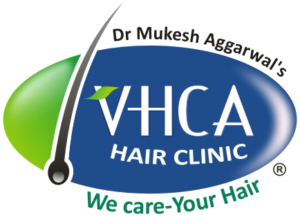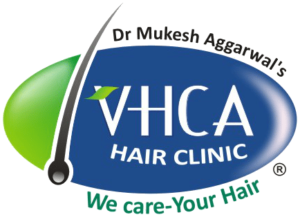trichotillomania
What is trichotillomania?
Individuals with Trichotillomania feel an overwhelming longing to pull out their hair. Trichotillomania typically creates during the juvenile years, however it’s been known to show up in small kids, as well. When it begins, it can proceed for quite a long while, proceeding through adulthood.
It influences guys and females similarly in youth yet can influence females all the more frequently during adulthood.
Most draw out the hair on their scalp. In any case, a few groups may likewise haul hair out of their stubbles, eyelashes, or eyebrows.
A few groups with trichotillomania additionally eat the hair they pull out. This condition is called trichophagia. It can cause huge issues in the gastrointestinal parcel.
The vast majority with Trichotillomania build up the condition in pre-adulthood. A portion of these individuals may then battle with the condition consistently or discontinuously all through adulthood.
HOW IS TRICHOTILLOMANIA Diagnosis?
To analyze trichotillomania, your primary care physician will converse with you about your clinical history, just as side effects you might be encountering.
They will probably utilize the models in the new version of the Diagnostic and Statistical Manual of Mental Disorders to check whether your indications coordinate.
As indicated by the DSM-5, somebody determined to have trichotillomania should meet the accompanying:
- repetitive pulling off in total agreement, bringing about going bald
- rehashed endeavors to diminish or stop hair pulling
- hair pulling causes clinically critical pain or disability in friendly, word related, or other significant spaces of working
- hair pulling or balding that isn’t inferable from another ailment (e.g., a dermatological condition)
- hair pulling isn’t better clarified by the indications of another psychological issue (e.g., endeavors to improve an apparent imperfection or defect in appearance in body dysmorphic jumble)
HEREDITARY HISTORY?
An individual who has a first-degree relative (parent or kin) with trichotillomania is bound to have the actual condition.
Youth injury: According to the National Organization for Rare Disorders, an individual who has encountered youth injury might be bound to create trichotillomania. Notwithstanding, there isn’t sufficient examination to help this thought.
Specialists are additionally attempting to recognize changes in mind capacity or science that could prompt trichotillomania.
Certain progressions may influence an individual’s capacity to control imprudent practices, for example, hair pulling.
Symptoms?
- Continually hair pulling, mainly from your scalp, eyebrows, or eyelashes, and also from other body parts.
- An increasing feel of tension before hair pulling, or when you try to resist pulling
- A comfort of pleasure or relief after the hair pulling
- Hair loss which is noticeable, similar to shortened hair or thinned or bald areas on the scalp or other area of your body,
- Including meager or missing eyelashes or eyebrows
- Preference for unique types of hair, habits that accompany hair pulling, or patterns of hair pulling.
- Biting, chewing or eating pulled-out hair
- Playing with pulled-out hair or rubbing it around your lips or face
- again and again, trying to stop pulling out your hair or trying to do it less frequently without success
- Identified pain or problems at work, school, or in social situations related to pulling out your hair.
CONSULT OUR TRICHOTILLOMANIA EXPERTS
CAUSES AND HAZARD FACTORS
Hair doctor specialists don’t have the foggiest idea what makes an individual create trichotillomania.
A few groups report that hair pulling assists with easing fatigue or stress. As per an article in the American Journal of Psychiatry
Hair doctor specialists do realize that specific variables can build an individual’s danger of creating trichotillomania. These danger factors include:
These factors responsible to increase the threat of trichotillomania.
- Family history- Genetics may play an important role in the development of trichotillomania, and the disorder may come in those who have a close relative with the complaint.
- Age. Trichotillomania generally develops at the age of between 10-13 years and it’s frequently a permanent problem. New born babies also can be prone to hair pulling, but this is generally mild and goes down on its own without treatment.
- Other diseases. People who have trichotillomania may also have other diseases, similar as depression, anxiety, or obsessive-compulsive disorder (OCD).
- Stress. Oppressively stressful situations or events may activate trichotillomania in some people.
Although far further women than men are treated for trichotillomania, this may be because women are more likely to seek medical advice. In early youth, boys and girls appear to be inversely affected.
Treatment
Research on the treatment of trichotillomania is limited because there is no permanent cure for trichotillomania. However, some treatment options can be helped many patients reduce their hair pulling or it may stop.
MEDICINEs
- Numerous individuals who have trichotillomania don’t look for treatment for their condition.
- A few groups might be ignorant that they have a perceived ailment, and may just view hair pulling as a negative routine. Others might be hesitant to look for a finding for an assortment of reasons.
- Specialists don’t analyze numerous instances of trichotillomania, which implies there is next to no data on powerful medicines accessible.
- Nonetheless, restricted exploration recommends that particular social treatments and meds might be gainful for individuals with the condition.
- Call us today to get rid of the trichotillomania problem!!
Therapy
Types of therapies that may be helpful for treatment in trichotillomania include:
- Habit reversal training. This behavior remedy is the primary treatment for trichotillomania. You learn how to check situations where you are likely to pull your hair and how to substitute other actions instead. For example, you might hold your fists to help stop the appetite or redirect your hand from your hair to your observance. and also other therapies may be used along with habit reversal training.
- Cognitive therapy. This therapy can help you recognize and examine distorted beliefs you may have in relation to hair pulling.
- Acceptance and commitment therapies. This therapy can help you learn to accept your hair pulling urges without taking any action on them.
therapy that helps with other internal health diseases frequently associated with trichotillomania, similar to depression, anxiety, or substance abuse, can be an important part of trichotillomania treatment.
faq
For teenagers and adults, the standard trichotillomania treatment is cognitive-behavioral therapy aimed at reducing the urge and diverting the habit. Some have been helped by antidepressants. Hair doctor specialists suggested parents of young patients not punish them, but divert them with a favorite object and reward them when they play with a toy or blanket rather than their hair.
Hair pulling frequently feel consumed by shame and feel uncomfortable around others. Generally, when hair pulling stops, the hair grows back ultimately — though it may be thinner or have a different texture. Eyelashes may stop growing back altogether. People who bite on the hair can form a hairball, which can be life- hanging.
The cause of trichotillomania can differ from person to person. Sometimes there is an event that proved difficult and frustrating. A response to that event may have been to pull hair out. The distraction that this action provided may have provided some stress relief.
Hypnotherapy, EFT (Tapping) and psychotherapy processes are used.
All patients are different. Some people may find that circa 6 sessions are enough. Usually, between 8 to 12 sessions are needed.
During office hours if you telephone and leave a message I will call you back withing 24 hours. Email support is also available.

